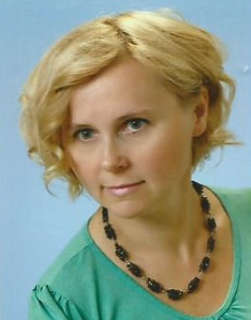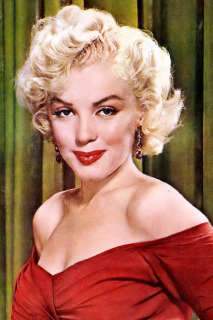Blond

Blond
Blond or fair hair is a hair color characterized by low levels of the dark pigment eumelanin. The resultant visible hue depends on various factors, but always has some yellowish color. The color can be from the very pale blond (caused by a patchy, scarce distribution of pigment) to reddish "strawberry" blond or golden-brownish ("sandy") blond colors (the latter with more eumelanin). Because hair color tends to darken with age, natural blond hair is generally rare in adulthood. Naturally-occurring blond hair is primarily found in populations of northern European descent and is believed to have evolved to enable more efficient synthesis of vitamin D, due to northern Europe's lower levels of sunlight. Blond hair has also developed in other populations, although it is usually not as common, and can be found among natives of the Solomon Islands, Vanuatu, and Fiji, among the Berbers of North Africa, and among some Asians.
In Western culture, blond hair has long been associated with female beauty. Aphrodite, the Greek goddess of love and beauty, was reputed to have blond hair. In ancient Greece and Rome, blond hair was frequently associated with prostitutes, who dyed their hair using saffron dyes in order to attract customers. The Greeks stereotyped Thracians and slaves as blond and the Romans associated blondness with the Celts and the Germans to the north. In western Europe during the Middle Ages, long, blond hair was idealized as the paragon of female beauty. The Norse goddess Sif and the medieval heroine Iseult were both significantly portrayed as blond and, in medieval artwork, Eve, Mary Magdalene, and the Virgin Mary are often shown with blond hair. In the late nineteenth and early twentieth century, scientific racists categorized blond hair and blue eyes as characteristics of the supreme Nordic race. In contemporary western culture, blonde women are often negatively stereotyped as sexually attractive, but unintelligent.
Etymology, spelling, and grammar
Origins and meanings
The word "blond" is first documented in English in 1481[1] and derives from Old French blund, blont, meaning "a colour midway between golden and light chestnut".[2] It gradually eclipsed the native term "fair", of same meaning, from Old English fæġer, causing "fair" later to become a general term for "light complexioned". This earlier use of "fair" survives in the proper name Fairfax, from Old English fæġer-feahs meaning "blond hair".
The word "blond" has two possible origins.
Some linguists say it comes from Medieval Latin blundus, meaning "yellow", from Old Frankish blund which would relate it to Old English blonden-feax meaning "grey-haired", from blondan/blandan meaning "to mix" (Cf. blend). Also, Old English beblonden meant "dyed", as ancient Germanic warriors were noted for dyeing their hair. However, linguists who favor a Latin origin for the word say that Medieval Latin blundus was a vulgar pronunciation of Latin flavus, also meaning "yellow". Most authorities, especially French, attest to the Frankish origin. The word was reintroduced into English in the 17th century from French, and was for some time considered French; in French, "blonde" is a feminine adjective; it describes a woman with blond hair.[3]
Usage
"Blond", with its continued gender-varied usage, is one of few adjectives in written English to retain separate lexical genders.
The two forms, however, are pronounced identically.
American Heritage's Book of English Usage propounds that, insofar as "a blonde" can be used to describe a woman but not a man who is merely said to possess blond(e) hair, the term is an example of a "sexist stereotype [whereby] women are primarily defined by their physical characteristics."[4] The Oxford English Dictionary (OED) records that the phrase "big blond beast" was used in the 20th century to refer specifically to men "of the Nordic type" (that is to say, blond-haired).[5] The OED also records that blond as an adjective is especially used with reference to women, in which case it is likely to be spelt "blonde", citing three Victorian usages of the term. The masculine version is used in the plural, in "blonds of the European race",[5] in a citation from 1833 Penny cyclopedia, which distinguishes genuine blondness as a Caucasian feature distinct from albinism.[6]
By the early 1990s, "blonde moment" or being a "dumb blonde" had come into common parlance to mean "an instance of a person, esp.
a woman... being foolish or scatter-brained."[5] Another hair color word of French origin, brunet(te) (from the same Germanic root that gave "brown"), functions in the same way in orthodox English. The OED gives "brunet" as meaning "dark-complexioned" or a "dark-complexioned person", citing a comparative usage of brunet and blond to Thomas Henry Huxley in saying, "The present contrast of blonds and brunets existed among them."[8] "Brunette" can be used, however, like "blonde", to describe a mixed-gender populace. The OED quotes Grant Allen, "The nation which resulted... being sometimes blonde, sometimes brunette."[9]
"Blond" and "blonde" are also occasionally used to refer to objects that have a color reminiscent of fair hair.
For example, the OED records its use in 19th-century poetic diction to describe flowers, "a variety of clay ironstone of the coal measures", "the colour of raw silk",[5] a breed of ray, lager beer, and pale wood.[5]
Varieties
Various subcategories of blond hair have been defined to describe the different shades and sources of the hair color more accurately.
Common examples include the following:
ash-blond:[11] ashen or grayish blond.
bleached blond, bottle blond, or peroxide blond:[12] terms used to refer to artificially colored blond hair.
blond/flaxen:[13][14] when distinguished from other varieties, "blond" by itself refers to a light but not whitish blond, with no traces of red, gold, or brown; this color is often described as "flaxen".
dirty blond [15] or dishwater blond:[16] dark blond with flecks of golden blond and brown.
golden blond: a darker to rich, golden-yellow blond (found mostly in Northeastern Europe, i.e., Russia, Estonia).
honey blond: dark iridescent blond.
platinum blond [17] or towheaded:[18][19] whitish-blond; almost all platinum blonds are children, although it is found on people in Northern Europe. "Platinum blond" is often used to describe bleached hair, while "towheaded" generally refers to natural hair color.
strawberry blond[22] or Venetian blond: reddish blond[23][24][25][26][27]
yellow: yellow-blond ("yellow" can also be used to refer to hair which has been dyed yellow).
Media related to Blond at Wikimedia Commons
Evolution of blond hair
Natural lighter hair colors occur most often in Europe and less frequently in other areas.[28] In Northern European populations, the occurrence of blond hair is common. The hair color gene MC1R has at least seven variants in Europe, giving the continent a wide range of hair and eye shades. Based on genetic research carried out at three Japanese universities, the date of the genetic mutation that resulted in blond hair in Europe has been isolated to about 11,000 years ago during the last ice age.[29]
A typical explanation found in the scientific literature for the evolution of light hair is related to the evolution of light skin, and in turn the requirement for vitamin D synthesis and northern Europe's seasonal less solar radiation.[30] Lighter skin is due to a low concentration in pigmentation, thus allowing more sunlight to trigger the production of vitamin D. In this way, high frequencies of light hair in northern latitudes are a result of the light skin adaptation to lower levels of solar radiation, which reduces the prevalence of rickets caused by vitamin D deficiency. The darker pigmentation at higher latitudes in certain ethnic groups such as the Inuit is explained by a greater proportion of seafood in their diet and by the climate which they live in, because in the polar climate there is more ice or snow on the ground, and this reflects the solar radiation onto the skin, making this environment lack the conditions for the person to have blond, brown or red hair, light skin and blue, grey or green eyes.
An alternative hypothesis was presented by Canadian anthropologist Peter Frost, who claims blond hair evolved very quickly in a specific area at the end of the last ice age by means of sexual selection.[31] According to Frost, the appearance of blond hair and blue eyes in some northern European women made them stand out from their rivals, and more sexually appealing to men, at a time of fierce competition for scarce males.[31][32]
The derived allele of KITLG associated with blond hair in modern Europeans is present in several individuals of the Ancient North Eurasian (ANE) lineage, and is recorded in Mesolithic Eastern Europe as associated with the Eastern European Hunter-Gatherer (EHG) lineage derived from ANE. The earliest known individual with the derived allele is the ANE Afontova Gora 3 individual, dated to 14,700 years ago.[33] Ancient DNA of ANE or "steppe" ancestry is found in Mesolithic Northern Europe.
A 2014 study reported seven Mesolithzic hunter-gatherers found at Motala, southern Sweden, dated to 7,700 years ago, as the earliest known individuals in whom the modern Scandinavian phenotype, combining light skin, blue eyes and blond hair, was combined.
These individuals had light skin gene alleles in SLC24A5 and SLC45A2, and HERC2/OCA2 alleles associated with blue eyes (also contributes to lighter skin and blond hair).[34] Light pigmentation traits had thus already existed in pre-Indo-European Europeans, since at least the later Mesolithic.[35] Later individuals with Yamnaya Indo-European ancestry, by contrast, were predominantly dark-eyed (brown), dark-haired and had a skin colour that was moderately light, though somewhat darker than that of the average modern European.[36]
It is possible that blond hair evolved more than once.
A 2012 study published in Science reported a distinct genetic origin of blond hair in people from the Solomon Islands in Melanesia, associated with an amino acid change in TYRP1 produced blond hair.[37][38]
Prevalence
Blond hair is most common in light-skinned infants and children,[39] so much so that the term "baby blond" is often used for very light colored hair. Babies may be born with blond hair even among groups where adults rarely have blond hair, although such natural hair usually falls out quickly. Blond hair tends to turn darker with age, and many children's blond hair turns light, medium, dark brown or black before or during their adult years.[39] Because blond hair tends to turn brunette with age, natural blond hair is rare in adulthood;[40][41] according to the sociologist Christie Davies, only around five percent of adults in Europe and North America are naturally blond.[40] A study conducted in 2003 concluded that only four percent of American adults are naturally blond.[41] Nonetheless, a significant majority of Caucasian women (perhaps as high as three in four) dye their hair blond, a significantly higher percentage than for any other hair color.[40][42]
Europe
Blond hair is most common in Scandinavia and the Baltic Sea countries, where true blondism is believed to have originated. The pigmentation of both hair and eyes is lightest around the Baltic Sea, and darkness increases regularly and almost concentrically around this region.[43]
In France, according to a source published 1939, blondism is more common in Normandy, and less common in the Pyrenees and the Mediterranean seacoast; 26% of French population has blond or light brown hair.[44] A 2007 study of French females showed that by then roughly 20% were blonde, although half of these blondes were fully fake. Roughly ten percent of French females are natural blondes, of which 60% bleach their hair to a lighter tone of blond.[45]
In Portugal, an average 11% of the population shows traces of blondism, peaking at 14.3–15.1% blond people in Póvoa de Varzim in northern Portugal.[46][47] In northern Spain, 17% of the population shows traces of blondism, but in southern Spain just 2% of the people are blond.[48] In Italy, a study of Italian men conducted by Ridolfo Livi between 1859 and 1863 on the records of the National Conscription Service showed that 8.2% of Italian men exhibited blond hair; blondism frequency displayed a wide degree of regional variation, ranging from around 12.6% in Veneto to 1.7% among the Sardinians.[49]Antropometria%20Militare.%20Ris]] northern regions Sardinia Benevento the surrounding area in Campania, where various shades of blond hair were present in 10% – 14.9% of the population, Southern Italy as a whole averaged between 2.5% and 7.4%.[51]
Africa
Blondism is a common sight among Berbers of North Africa, especially in the Rif and Kabyle region. Blondism frequency varies among Berbers from 1% among Jerban Berbers and 4% among Mozabite Berbers and Shawia Berbers, to 11% among Kabyle Berbers.[52] In South Africa where there is a significant population of whites, mainly from Dutch and English ancestry, blond people may account for 3-4% of the South African population.
A number of blond naturally mummified bodies of common people (i.e. not proper mummies) dating to Roman times have been found in the Fagg El Gamous cemetery in Egypt. "Of those whose hair was preserved 54% were blondes or redheads, and the percentage grows to 87% when light-brown hair color is added."[53] Excavations have been ongoing since the 1980s. Burials seem to be clustered by hair-colour.[54]
Oceania
Aboriginal Australians, especially in the west-central parts of the continent, have a high frequency of natural blond-to-brown hair. Blondness is also found in some other parts of the South Pacific, such as the Solomon Islands,[37][38] Vanuatu, and Fiji, again with higher incidences in children. Blond hair in Melanesians is caused by an amino acid change in the gene TYRP1.[37] This mutation is at a frequency of 26% in the Solomon Islands and is absent outside of Oceania.[37]
Asia
Blond hair can be found in any region of Asia, including West Asia, East Asia, Central Asia, and South Asia. In these parts of Asia, blond hair is generally seen among children and usually turns into a shade of dark brown in adulthood. Environmental factors, such as sun exposure and nutrition status, often contribute to changes in hair color in Asia.[55] Genetic research published in 2014, 2015 and 2016 found that Yamnaya Proto-Indo-Europeans, who migrated to Europe in the early Bronze Age were overwhelmingly dark-eyed (brown) and dark-haired, and had a skin colour that was moderately light, though somewhat darker than that of the average modern European.[36] While light pigmentation traits had already existed in pre-Indo-European Europeans (both farmers and hunter-gatherers), long-standing philological attempts to correlate them with the arrival of Indo-Europeans from the steppes were misguided.[35]
According to genetic studies, Yamnaya Proto-Indo-European migration to Europe led to Corded Ware culture, where Yamnaya Proto-Indo-Europeans mixed with "Scandinavian hunter-gatherer" women who carried genetic alleles HERC2/OCA2, which causes a combination of blue eyes and blond hair.[56][56][34] Proto-Indo-Iranians who split from Corded Ware culture formed the Andronovo culture and are believed to have spread genetic alleles HERC2/OCA2 that cause blond hair to parts of West Asia, Central Asia and South Asia.[56] Genetic analysis in 2014 also found that people of the Afanasevo culture which flourished in the Altai Mountains were genetically identical to Yamnaya Proto-Indo-Europeans and that they did not carry genetic alleles for blond hair or light eyes.[56][56][56] The Afanasevo culture was later replaced by a second wave of Indo-European invaders from the Andronovo culture, who were a product of Corded Ware admixture that took place in Europe, and carried genetic alleles that cause blond hair and light eyes.[56][56][56] In 2009 and 2014, genomic study of Tarim mummies discovered in the Tarim Basin in present-day Xinjiang, China, showed that they were also a product of a Corded Ware admixture and were genetically closer to the Andronovo culture (which split from Corded Ware culture)[56] than to the Yamnaya culture or Afanasevo culture.[59][56]
Today, higher frequencies of light hair in Asia are prevalent among Pamiris, Kalash, Nuristani and Uyghur ethnic groups.[60] About 75% of Russia is geographically considered North Asia; however, the Asian portion of Russia contributes to only an estimate of 20% of Russia's total population.[61] North Asia's population has an estimate of 1-19% with light hair.[62][63] From the times of the Russian Tsardom of the 17th century through the Soviet Union rule in the 20th century, many ethnic Russians, Ukrainians, Belarusians, Lithuanians, Latvians, and Estonians were settled in or exiled en masse to Siberia and Central Asia. Blond hair is often seen in these groups, whereas the indigenous peoples are more likely to be dark haired.[64][65]Migrant%20resettlement%20in%20the%20R]] [67]
Americas
Historical cultural perceptions
Ancient Greece
Most people in ancient Greece had dark hair and, as a result of this, the Greeks found blond hair immensely fascinating.[77] In the Homeric epics, Menelaus the king of the Spartans is, together with some other Achaean leaders, portrayed as blond.[78] Other blond characters in the Homeric poems are Peleus, Achilles, Meleager, Agamede, and Rhadamanthys.[78] Aphrodite, the Greek goddess of love and beauty, was often described as golden-haired and portrayed with this color hair in art.[79] Aphrodite's master epithet in the Homeric epics is Χρυσεη (Khryseē), which means "golden".[80] The traces of hair color on Greek korai probably reflect the colors the artists saw in natural hair;[81] these colors include a broad diversity of shades of blond, red, and brown.[81] The minority of statues with blond hair range from strawberry blond up to platinum blond.[81]
Sappho of Lesbos (c. 630-570 BC) wrote that purple-colored wraps as headdress were good enough, except if the hair was blond: "...for the girl who has hair that is yellower than a torch [it is better to decorate it] with wreaths of flowers in bloom."[82] Sappho also praises Aphrodite for her golden hair, stating that since gold metal is free from rust, the goddess's golden hair represents her freedom from ritual pollution.[80] Sappho's contemporary Alcman of Sparta praised golden hair as one of the most desirable qualities of a beautiful woman,[80] describing in various poems "the girl with the yellow hair" and a girl "with the hair like purest gold."[80]
In the fifth century BC, the sculptor Pheidias may have depicted the Greek goddess of wisdom Athena's hair using gold in his famous statue of Athena Parthenos, which was displayed inside the Parthenon.[83] The Greeks thought of the Thracians who lived to the north as having reddish-blond hair.[84] Because many Greek slaves were captured from Thrace, slaves were stereotyped as blond or red-headed.[84] "Xanthias" (Ξανθίας), meaning "reddish blond", was a common name for slaves in ancient Greece[84][85] and a slave by this name appears in many of the comedies of Aristophanes.[85]
The most famous statue of Aphrodite, the Aphrodite of Knidos, sculpted in the fourth century BC by Praxiteles, represented the goddess's hair using gold leaf[86] and contributed to the popularity of the image of Aphrodite as a blonde goddess.[87] Greek prostitutes frequently dyed their hair blond using saffron dyes or colored powders.[88] Blond dye was highly expensive, took great effort to apply, and smelled repugnant,[88] but none of these factors inhibited Greek prostitutes from dying their hair.[88] As a result of this and the natural rarity of blond hair in the Mediterranean region, by the fourth century BC, blond hair was inextricably associated with prostitutes.[88] The comic playwright Menander (c. 342/41 – c. 290 BC) protests that "no chaste woman ought to make her hair yellow."[88] At another point, he deplores blond hair dye as dangerous: "What can we women do wise or brilliant, who sit with hair dyed yellow, outraging the character of gentlewomen, causing the overthrow of houses, the ruin of nuptials, and accusations on the part of children?"[88] Historian and Egyptologist Joann Fletcher asserts that the Macedonian ruler Alexander the Great and members of the Macedonian-Greek Ptolemaic dynasty of Hellenistic Egypt had blond hair, such as Arsinoe II and Berenice II.[89]
Roman Empire
During the early years of the Roman Empire, blond hair was associated with prostitutes.[90] The preference changed to bleaching the hair blond when Greek culture, which practiced bleaching, reached Rome, and was reinforced when the legions that conquered Gaul returned with blond slaves.[91] Sherrow also states that Roman women tried to lighten their hair, but the substances often caused hair loss, so they resorted to wigs made from the captives' hair.[92] According to Francis Owen, Roman literary records describe a large number of well-known Roman historical personalities as blond.[93]
Juvenal wrote in a satirical poem that Messalina, Roman empress of noble birth, would hide her black hair with a blond wig for her nightly visits to the brothel: sed nigrum flavo crinem abscondente galero intravit calidum veteri centone lupanar.[94] In his Commentary on the Aeneid of Virgil, Maurus Servius Honoratus noted that the respectable matron was only black haired, never blonde.[95] In the same passage, he mentioned that Cato the Elder wrote that some matrons would sprinkle golden dust on their hair to make it reddish-color. Emperor Lucius Verus (r. 161 – 169 AD) was said to sprinkle gold-dust on his already "golden" blond hair to make it even blonder and brighter.[96]
From an ethnic point of view, Roman authors associated blond and red hair with the Gauls and the Germans: e.g., Virgil describes the hair of the Gauls as "golden" (aurea caesaries),[97] Tacitus wrote that "the Germans have fierce blue eyes, red-blond hair (rutilae comae), huge (tall) frames";[98] in accordance with Ammianus, almost all the Gauls were "of tall stature, fair and ruddy".[99] Celtic and Germanic peoples of the provinces, among the free subjects called peregrini, served in Rome's armies as auxilia, such as the cavalry contingents in the army of Julius Caesar.[100] Some became Roman citizens as far back as the 1st century BC, following a policy of Romanization of Gaul and Lesser Germania.[101] Sometimes entire Celtic and Germanic tribes were granted citizenship, such as when emperor Otho granted citizenship to all of the Lingones in 69 AD.[102]
By the 1st century BC, the Roman Republic had expanded its control into parts of western Germany, and by 85 AD the provinces of Germania Inferior and Germania Superior were formally established there.[103] Yet as late as the 4th century AD, Ausonius, a poet and tutor from Burdigala, wrote a poem about an Alemanni slave girl named Bissula, whom he had recently freed after she'd been taken as a prisoner of war in the campaigns of Valentinian I, noting that her adopted Latin language marked her as a woman of Latium yet her blond-haired, blue-eyed appearance ultimately signified her true origins from the Rhine.[104] Further south, the Iberian peninsula was originally inhabited by Celtiberians outside of Roman control. The gradual Roman conquest of Iberia was completed by the early 1st century AD.[105] The Romans established provinces such as Hispania Terraconensis that were inhabited largely by Gallaeci, whose red and blond-haired descendants (which also include those of Visigothic origins) have continued to inhabit northern areas of Spain such as Galicia and Portugal into the modern era.[105]
Medieval Europe
Medieval Scandinavian art and literature often places emphasis on the length and color of a woman's hair,[106] considering long, blond hair to be the ideal.[106] In Norse mythology, the goddess Sif has famously blond hair, which some scholars have identified as representing golden wheat.[107] Old Norse]] Helga the Beautiful autiful woman in the world", is said to have hair that is "as fair as beaten gold" and so long that it can "envelope her entirely".[106] In the Poetic Edda poem Rígsþula, the blond man Jarl is considered to be the ancestor of the dominant warrior class. In Northern European folklore, supernatural beings value blond hair in humans. Blond babies are more likely to be stolen and replaced with changelings, and young blonde women are more likely to be lured away to the land of the beings.[108]
The Scandinavians were not the only ones to place strong emphasis on the beauty of blond hair;[106] the French writer Christine de Pisan writes in her book The Treasure of the City of Ladies (1404) that "there is nothing in the world lovelier on a woman's head than beautiful blond hair."[106] In medieval artwork, female saints are often shown with long, shimmering blond hair, which emphasizes their holiness and virginity.[109] At the same time, however, Eve is often shown with long, blond hair, which frames her nude body and draws attention to her sexual attractiveness.[90][110] In medieval Gothic paintings of the crucifixion of Jesus, the figure of Mary Magdalene is shown with long, blond hair, which flows down her back unbound in contrast to most of the women in the scenes, who are shown with dark hair, normally covered by a scarf.[111] In the older versions of the story of Tristan and Iseult, Tristan falls in love with Iseult after seeing only a single lock of her long, blond hair.[112] In fact, Iseult was so closely associated with blondness that, in the poems of Chrétien de Troyes, she is called "Iseult le Blonde".[112] In Geoffrey Chaucer's Canterbury Tales (written from 1387 until 1400), the knight describes the beautiful Princess Emily in his tale, stating, "yclothed was she fressh, for to devyse:/Hir yellow heer was broided in a tresse/Behinde hir bak, a yerde long, I gesse" (lines 1048-1050).[112]
Because of blond hair's relative commonness in northern Europe, especially among children, folk tales from these regions tend to feature large numbers of blond protagonists.[90][113] Although these stories may not have been seen by their original tellers as idealizing blond hair,[113] when they are read in cultures outside of northern Europe where blond hair "has rarity value", they may seem to connote that blond hair is a sign of special purity.[113]
During the medieval period, Spanish ladies preferred to dye their hair black, yet by the time of the Renaissance in the 16th century the fashion (imported from Italy) was to dye their hair blond or red.[114]
Early twentieth-century racism
In the early twentieth century racialist and supremacist thinkers promulgated the theory that human features such as blond hair and blue eyes were hallmarks of a "master race".[115] In the 1920s, the eugenicist Eugen Fischer invented a hair palette called the Fischer scale that he said could categorize racial typology - these typologies were abandoned after World War II.[116] Classification of race based on physical characteristics such as hair color is seen as a "flawed, pseudo-scientific relic of the past."[116]
Modern cultural stereotypes
Sexuality
In contemporary popular culture, blonde women are stereotyped as being more sexually attractive to men than women with other hair colors.[91] For example, Anita Loos popularized this idea in her 1925 novel Gentlemen Prefer Blondes.[91] Some women have reported they feel other people expect them to be more fun-loving after having lightened their hair.[91]
Madonna popularized the short bleached blond haircut after the release of her third studio album, True Blue, and influenced both the 1980s fashion scene as well as many future female musicians like Christina Aguilera, Lady Gaga, and Miley Cyrus.[117]
Intelligence
Originating in Europe, the "blonde stereotype" is also associated with being less serious or less intelligent.[91] Blonde jokes are a class of jokes based on the stereotype of blonde women as unintelligent.[91][118] In Brazil, this extends to blonde women being looked down, as reflected in sexist jokes, as also sexually licentious.[119] It is believed the originator of the dumb blonde was an eighteenth-century blonde French prostitute named Rosalie Duthé whose reputation of being beautiful but dumb inspired a play about her called Les Curiosites de la Foire (Paris 1775).[91] Blonde actresses have contributed to this perception; some of them include Marilyn Monroe, Judy Holliday, Jayne Mansfield, and Goldie Hawn during her time at Laugh-In.[91]
The British filmmaker Alfred Hitchcock preferred to cast blonde women for major roles in his films as he believed that the audience would suspect them the least, comparing them to "virgin snow that shows up the bloody footprints", hence the term Hitchcock blonde.[120]*Hitchcock's%20Romantic%20Irony]]his stereotype has become so ingrained it has spawned counter-narratives, such as in the 2001 film Legally Blonde Elle Woods Reese Witherspoon at Harvard despite biases against her beauty and blond hair.[91]
In the 1950s, the American actress Marilyn Monroe's screen persona centered on her blond hair and the stereotypes associated with it, especially dumbness, naïveté, sexual availability and artificiality.[121] She often used a breathy, childish voice in her films, and in interviews gave the impression that everything she said was "utterly innocent and uncalculated", parodying herself with double entendres that came to be known as "Monroeisms".[122] For example, when she was asked what she had on in the 1949 nude photo shoot, she replied, "I had the radio on".[123] Monroe often wore white to emphasize her blondness, and drew attention by wearing revealing outfits that showed off her figure.[124] Although Monroe's typecast screen persona as a dim-witted but sexually attractive blonde was a carefully crafted act, audiences and film critics believed it to be her real personality and did not realize that she was only acting.[125]
The notion that blonds are less intelligent is not grounded in fact.
A 2016 study of 10,878 Americans found that both women and men with natural blond hair had IQ scores similar to the average IQ of non-blond white Americans, and that white women with natural blond hair in fact had a higher average IQ score (103.2) than white women with brown hair (102.7), red hair (101.2), or black hair (100.5). Although many consider blonde jokes to be harmless, the author of the study stated the stereotype can have serious negative effects on hiring, promotion and other social experiences.[126] Rhiannon Williams of The Telegraph writes that dumb blonde jokes are "one of the last 'acceptable' forms of prejudice".[127]
See also
- Science
Disappearing blonde gene
Human hair color Auburn hair Black hair Brown hair Red hair
- Society
Blonde vs. brunette rivalry
Blonde stereotype
Ganguro
Go Blonde Festival



